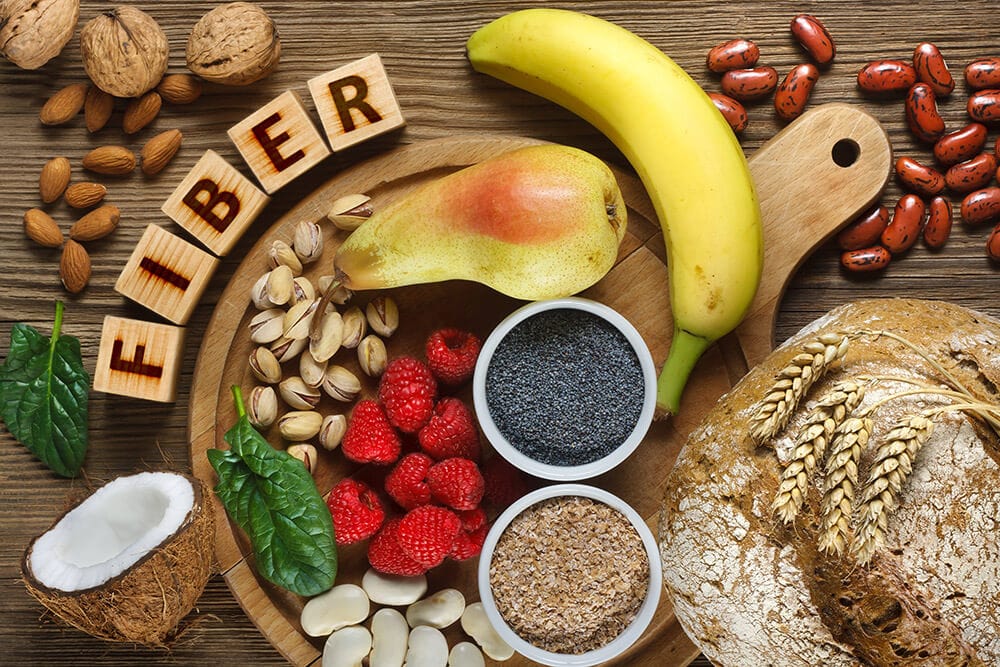
Fiber is not something that people consider on a daily basis, yet it is one of the components that can be used to maintain digestive health, weight, and health in general. We promote fiber among patients throughout Houston at Gastrodoxs .
According to Dr. Bharat Pothuri, one of the top gastroenterologists in Houston, dietary fiber is the best friend of the digestive system. It is regular, stabilizing, and it makes you full-naturally.
Here, we identify five effective methods of increasing the number of fibers in your diet and why just a few adjustments can help you go a long way.
Dietary fiber is a form of carbohydrate that cannot be totally absorbed in the body. It goes through your gut and it helps to regulate the way your gut works.
“Fiber nourishes your gut microbiome," says Dr. Pothuri. “It also delays sugar absorption, which helps prevent energy crashes."
Fibers in diet are not only beneficial in the digestive system.
According to Dr. Pothuri, Fiber assists patients to keep their appetite under control without deprivation.
Increasing the amount of fiber does not have to reduce the flavor or convenience. These five concepts operate with daily foods that are available in the grocery stores and farmers markets of Houston.
Oats made of steel-cut have approximately 5 grams of fiber.
One cup of spinach has an approximate of 4 grams of fiber.
A cup of cooked lentils contains 15/ 16 grams of fiber -almost a half of your daily dose.
A cup of cooked lentils contains 15/ 16 grams of fiber -almost a half of your daily dose.
Chia seeds contain fiber in two tablespoons at 11 grams.
| Food Item | Fiber (g) | Type | Best Use Case |
| Black Beans | 15.0 | Soluble & Insoluble | Tacos, chili, salads |
| Lentils | 16.0 | Soluble & Insoluble | Stews, soups, or curry bases |
| Steel-Cut Oats | 5.0 | Soluble | Warm breakfast with fruit |
| Quinoa | 5.2 | Insoluble | Side dish or grain bowl base |
| Chia Seeds (2 tbsp) | 11.0 | Soluble | Smoothies, puddings, overnight oats |
| Avocado (1 medium) | 10.0 | Insoluble | Toast topping or salad food. |
| Broccoli (1 cup cooked) | 5.1 | Insoluble | Pan-fried or roasted vegetable platter |
It is easy to add fiber and it is also delicious. The following are some of the ideas:
Allow chia seeds to be moistened with almond milk overnight. Add fruit before serving.
A quinoa or brown rice base is used. Stir in black beans, cooked sweet potatoes and greens. Pour tahini dressing.
Prepare a whole-grain tortilla in combination with hummus, spinach, carrots, and grilled chicken.
Combine almonds, dried figs and pumpkin seeds in a snack that is rich in fiber.
Mix oats, seed, nuts chopped up, dry fruit and a little honey. Bake until golden.
Houston has a lot of places where a person can find fresh and fiber-filled foods.
According to Dr. Pothuri, the local markets in Houston have fiber-based foods which are fresh and tasty.
Fiber helps in your digestive system, heart and energy-ranging-and you do not need the complexities of adding it to your diet. These five simple steps combined with the assistance of Gastrodoxs would enable you to have fiber-rich meals without compromising taste. You can pick local produce or make a smoothie full of vegetables, but either way, every bite will make a difference towards a healthier gut.
Women need 25g; men need 38g.
Yes, but it's uncommon. Begin with a slow rate to prevent bloating or gas.
No, fiber does not change under the majority of cooking processes.
Whole foods are best. Supplements are a backup.
Yes, fiber makes you feel full and makes you over eat less.
No. Solvable and insolvable fiber matter.
BBoth are great. Eat berries, apples, broccoli, and carrots.
Possibly at first. Slow down the increase and consume more water.
Eat oats using chia, berries and walnuts..
Go to Urban Harvest or any local co-ops, or your local H-E-B.